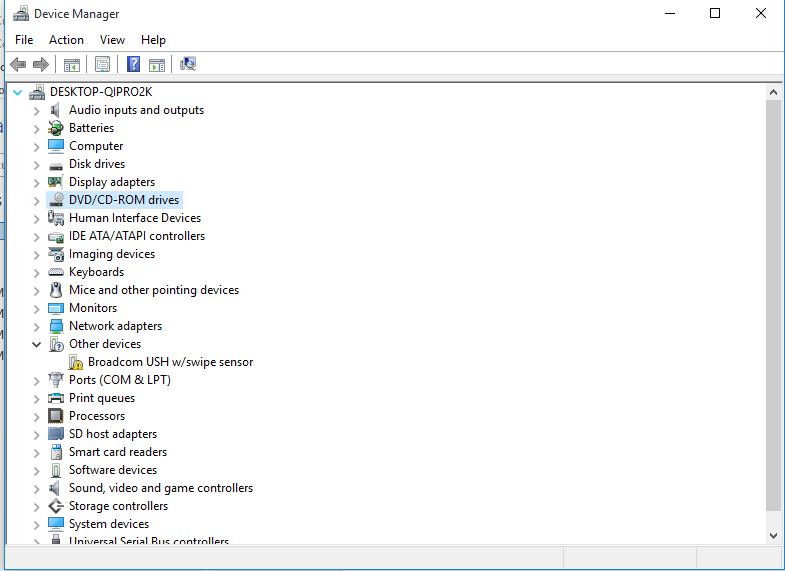
Before I finish the second article on Step-Up Authentication, I thought I’d write something quick about Virtual Smart Cards (VSC), as they also feature in the next post.Smart card authentication requires delegation for which the Director. Up to Windows 7: Tool size: 248KB: Download: TestResMan This utility enables to test the PC/SC Resource Manager in Windows. Windows All: Tool size: 314KB: Download: Fix PC/SC Resource Manager This tool repairs a damaged PC/SC Resource Manager. Smart PC/SC Diagnostic This utility enabled to check card reader configuration and create a log file.
Smart Card Manager For Windows 10 And Select
3.While Windows 8 has been taking lots of flak for various UI changes, there are a number of nice new features that have snuck in rather quietly. Go to Device Manager (right click on My Computer, choose Manage and then find Device Manager in the left panel), or right click on Start Menu for Windows 10 and select Device Manager. Cab file to a folder of your choice.
The TPM module stores the private key of the virtual smart card. They emulate the use of a physical card reader via the use of the Trusted Platform Module (TPM) found in most modern business-grade computers. VSC’s provide an alternate strong authentication mechanism that removes the need for a physical smart card reader.
Smart Card Manager Windows 8.1 And Later
The TPM module needs to be enable on the computer. The private key is device centric, with the virtual smartcard stored on the same computer. Gemalto - Other hardware, Smart Cards - Gemalto IDPrime MD Smart Card.The error message that appears the first time we open the UFI application - Android ToolBox, in the old version v.1.3.0.xxxx up to the latest version v.1.4.0.Private keys are stored in the crypto functionality of the Trusted Platform Module (TPM) of the laptop. The machine I have for testing runs Windows 10 x64 (DE) and we have an RSA server and windows Logon via RSA Authentication Manager for Windows running.Windows 10 and Later Servicing Drivers for testing,Windows 7,Windows 8,Windows 8.1 and later drivers,Windows Server 2008 R2,Windows Server 2012,Windows Server 2012 R2 and later drivers. We’ll give it the official 1.5x times authentication moniker (1.5FA).
We’ll cover other logon scenarios using VSCs in the next Step-Up authentication post.Meanwhile, TLSClient (SSL Client Certificate) is elevated to the top of the list and switched with the default Forms authentication.Users accessing the AD FS proxy with a VSC now get a prompt to select their certificateHaving highlighted and click my user, I now enter the PIN.Users not possessing a smart card user certificate will get a 403 error.The problem with this approach is that it’s a little generic. For the purposes of this exercise, to support VSC smart logon, I changed my AD FS proxy configuration to support client certificate authentication, modifying the local authentication types parameter in the web.config on the AD FS proxy. We can now logout and the virtual smart card should be available for logon.Click on our enrolled user and then logon with our PIN.I thought I’d give this a whirl with AD FS. On the Cryptography tab set the cryptographic provider to the Microsoft Base Smart Card Crypto Provider.Give (authenticated) users Enrol permissions on the Security tab of the template and then issue the new certificate template.We can use the built-in tool TPM Virtual Smart Card Manager (tpmvscmgr) to provision the smart card.Tpmvscmgr.exe create /name Auth360Test /adminkey random /generateThe generate command formats the TPM virtual smart card so it can be then used to enrol for certificates.From a LAN or DirectAccess connected PC we can enrol via use the MMC Certificate Users snap-in, using the Request New Certificate optionWith the VSC enrolled. On the enterprise certification authority (CA) we can duplicate the built-in Smartcard Logon template found in certificate services using the V2 Windows Server 2003 compatible template.With our new template, entitled Virtual Smart Card, on the Request Handling tab set the certificate purpose to Signature and Smart Card Logon and the minimum key size to 2048. Given that we’re emulating physical smart card behaviour, we’re going to need a certificate and that means Certificate Services and an enterprise Public Key Infrastructure (PKI).I’ve used a Windows 2008 R2 CA in this example.
Using Pinpoint DNS to route AD FS authentication traffic July 2, 2017 Windows 10 Passwordless – Azure AD Join, Microsoft Intune and Windows Hello for Business October 12, 2018 We’ll look at this in a future post about Bring Your Own Device (BYOD), Workplace Join and Work Folders, new features in Windows 8.1. Microsoft provide a couple of Powershell scripts to allow this, The Object Identifier (OID) of the certificate authenticating at AD FS needs to correspond to the linked claims rule to the OID in our “Virtual Smart Card Authentication” security group.
Customizing AD FS Relying Parties in Windows Server 2012R2 March 21, 2016 Back to the Home Realm Discovery in 2012 R2 May 20, 2016 AD FS – Old Habits (idpinitiatedsignon.aspx) June 16, 2016 DirectAccess with PointSharp ID July 27, 2016

Home Realm Discovery– Supporting IWA and Forms Logon Local Authentication Types August 31, 2013 First Impressions – AD FS and Windows Server 2012 R2 – Part I September 13, 2013 First Impressions – AD FS and Window Server 2012 R2 – Part II January 7, 2014


 0 kommentar(er)
0 kommentar(er)
